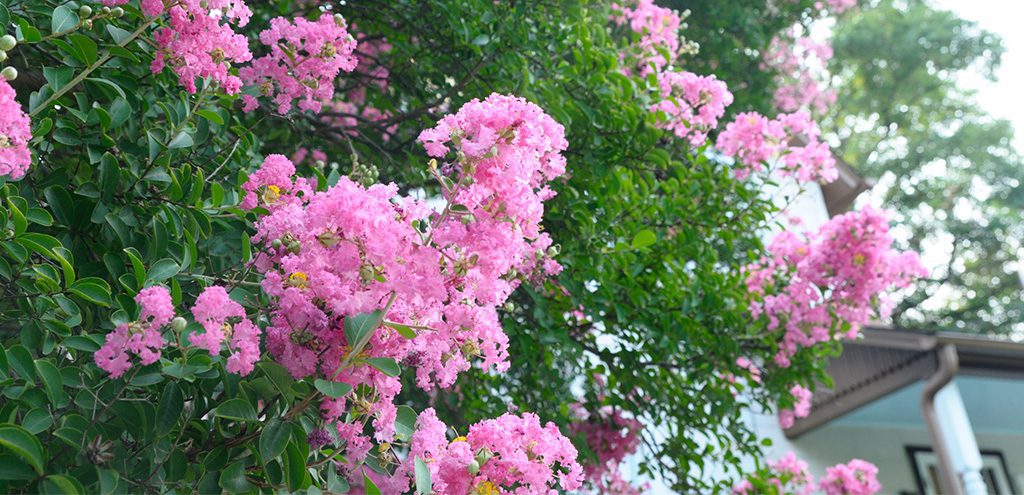
They will no longer live in the shadow of the cherry trees! Let us introduce you to the under appreciated summertime joy – the crape myrtle. This DCist piece has it all – including a map of where to find them and how to get $50 back if you plant one!
The National Cherry Blossom Festival is one of the District’s most popular attractions. Each spring, it draws more than a million tourists eager to gawk at the delicate pink and white blossoms that liven the city’s somewhat brutal architecture.
But while there’s no denying that cherry blossoms are gorgeous, they aren’t the only flamboyantly colored trees that deserve your attention. The District is also lined with hundreds of crape myrtles, and you may not have realized that they’re in full bloom as we speak.
They may not be as dainty as cherry blossoms, but crape myrtle flowers are easily as colorful, ranging from pure white, to red, to a purple-ish magenta. On top of that, they last a whole lot longer—cherry blossoms usually fade less than two weeks after blooming. Crape myrtles are also known for leaving a blanket of petals on sidewalks as they fade.
“One of the large draws to crape myrtles is that the bloom is so long,” says Robert Shaut, director of tree planting at Casey Trees, a local non-profit dedicated to expanding the District’s canopy. “It’ll start in early July and it can even trickle into September. At a time where trees aren’t really flowering as much, you’re getting two months of show.”
Lagerstroemia Indica, the variety of crape myrtles that is most common to the region, is easy to grow and maintain, according to Shaut. They enjoy hot, sunny conditions and prefer mild winters, but will usually grow back even after a deep winter frost. What’s even better is that they’re usually free of pests and fungus. And for those worried about seasonal allergies—they aren’t heavy pollinators.
“[The crape myrtle] is generally just pretty simple, straightforward, no big headaches to it,” Shaut says. “I think that’s one of the big pulls to it.”
As an added bonus, the trees have a patterned bark that alternates between lighter and darker colors, and they produce berries that last through the winter. (The berries become seedpods, and they’re not really suitable for eating.)
Crape myrtles are native to the Himalayan region, southeast Asia, and Japan, but they’ve naturalized in much of the Mid-Atlantic and Southeastern United States. Many varieties were developed here in D.C. at the U.S. National Arboretum. There are hundreds of them spread throughout the entire District, so you shouldn’t need to travel very far to see them. But if you can’t spot any on your evening stroll, Casey Trees has a handy map that shows their exact locations in the city.
Shaut thinks that one reason why crape myrtles aren’t as popular as cherry trees is that they bloom during the summer, when walking around can be a grueling experience due to hundred-degree weather and intense humidity. “People want to come to D.C. in early April, not so much late July and August,” he says. “By summertime, people are like, ‘It’s hot, I want a pool, I want to go to the beach.’”
Another reason may be that, unlike cherry trees, crape myrtles aren’t all concentrated in a touristy area like the Tidal Basin. “If there was a place with 500 crape myrtles, maybe it would be a little more of a destination for people,” Shaut says.
He says that Casey Trees recently sold 38 white varieties of crape myrtles to the DDOT’s Urban Forestry Division, which planted the saplings along Northwest Rhode Island Avenue between 19th and 23rd streets.
“Those are going to be super beautiful,” Shaut says.
The organization is currently offering a $50 rebate to residents who plant crape myrtles within District lines.

